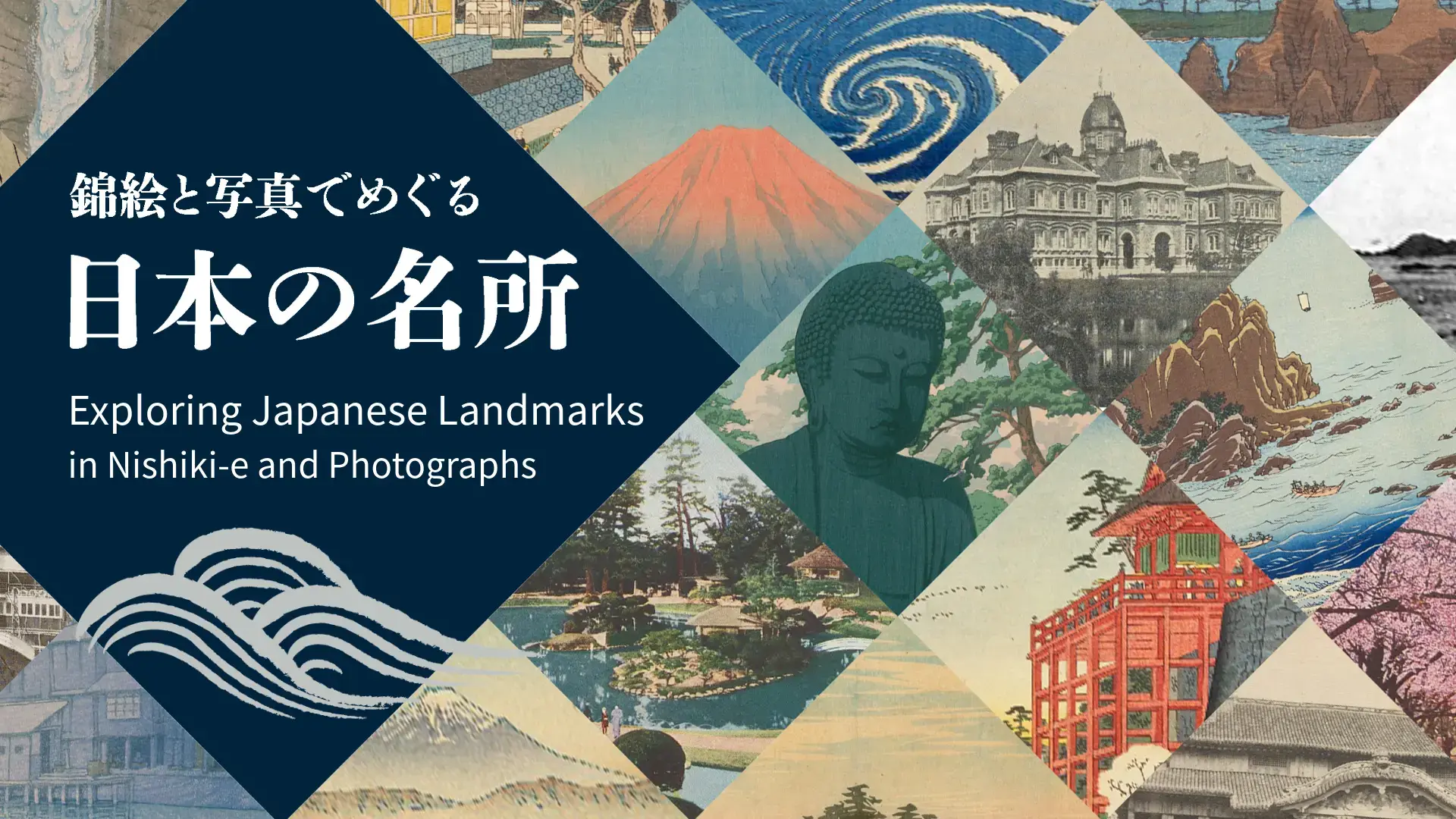
明治時代の野球と蹴球
このコラムは、平成19年に電子展示会「写真の中の明治・大正」の中で公開したコラムを移行したものです。内容は当時の記載内容に基づきます。
東京風景
「野球」が掲載された『早稲田』の刊行が明治42(1909)年、「慶応義塾の野球競技」が掲載された『東京風景』は44(1911)年刊だが、同年刊の 『慶応義塾之現状』中の「野球部」の項には、「綱町グラウンドに於て野球競技行はるるときは、来観者毎時殆ど萬を以て数るを見ても、義塾野球部の如何に盛大なるかを察す可し。」 とあって、同塾野球部の人気ぶりが記されている。同年の商業専門誌『野球界』の創刊は、明治時代末には野球人気が一般にも浸透したことを示しているといえよう。
光があれば陰もある。過熱する野球人気に反感をもつ人々もいた。同年8月29日から9月19日にかけて、『東京朝日新聞』は「野球と其害毒」というアンチ野球キャンペーンを掲載した。第1回は第一高等学校校長・新渡戸稲造の談話。一部を引用すると、
「野球と云ふ遊戯は悪く云へば巾着切の遊戯、対手を常にペテンに掛けよう、計略に陥れよう、塁を盗まうなどと眼を四方八面に配り神経を鋭くしてやる遊びである。故に米人には適するが英人や独逸人には決して出来ない。彼の英国の国技たる蹴球の様に鼻が曲っても顎骨が歪むでも球に齧付いて居る様な勇剛な遊びは米人には出来ぬ。」(東京朝日新聞8月29日付)
有名な「野球巾着切の遊戯」論だが、注目されるのはその直後に「彼の英国の国技たる蹴球」が「勇剛な遊び」として野球と対比され、評価されていることである。「球に齧付いて居る」とあるところをみると、新渡戸がイメージした「蹴球」はラグビー系のようだ。
本邦最初のラグビー専門書は明治42年刊行の慶応義塾蹴球部編『ラグビー式フットボール』。本文冒頭はいきなり 「野球を止してフットボールをやろう」で始まっている。都市対抗野球の橋戸賞にその名を残す、早稲田大学の名選手橋戸信が「フットボールは或は僕の生命かも知れない。僕は将来野球を止してフットボールをやろう。」と述べたことが引用されている。マナー面でも野球の非紳士性を批判し、ラグビーの優位性を主張した文章が 「服従の美徳」という項にある。
「其審判者に対して彼れ此れ文句をつくるのみならず所謂野次迄之れに加はりて喧嘩するは今日野球界の状態なり(四十二年五月八日早稲田大学対第一高等学校野球試合は其好適例なり)。痛はしからずとせんや。互に給金の増進換言すれば直接生活問題に影響する国技館に於ける角力に於てすら、余りに勝敗に悶着を惹起せしむる力士は見苦るしきもの也。況や士道に生活する学生が彼等が自から選べる審判者に対して不平を並ぶるに至りては到底吾人フットボール、プレーヤーの耐ゆる能はざる所也。」
野球に対するあからさまな敵愾心が示されている。新渡戸が「野球巾着切の遊戯」論を述べる2年前に刊行された最初のラグビー本は、紳士のスポーツたるラグビーの野球に対する優位性を主張したアンチ野球本でもあった。
野球と蹴球という訳語
新渡戸稲造の新聞談話中に野球と蹴球の語があったことが示すように、明治44(1911)年頃までにはベースボールの訳語としての野球、フットボールの訳語としての蹴球が定着していたようだ。野球という訳語は30(1897)年刊行の中馬庚著『野球』中の「野球ノ大要」に、「我ニアッテハ明治二十六年四月以来第一高等中学校ニ於テ其野外ノ遊戯ナルヲ以テ庭球ニ対シテ野球ト命名セル」という記述があり、中馬は「ベースボールを「野球」と最初に訳した人」(野球殿堂博物館ホームページ)として野球殿堂入りしている。
一方、フットボールを蹴球と訳した人物は不明で、ラグビーとサッカーのどちらが先かについての定説すらない。本邦最初のサッカー専門書は36(1903)年刊行の東京高等師範学校フットボール部編 『アッソシエーションフットボール』とも言われるが蹴球という語は使用されていない。慶応義塾のラグビーが蹴球部を名乗るのが36(1903)年、東京高等師範学校のサッカーが蹴球部を名乗るのが37(1904)年頃であり、その時期に定着してきたことは窺えるが、何時誰が訳したかとなると『野球』のような決定的文献は発見されていない。
競技の成熟度
前出『野球』の「(投手の) 打手ニ対スル心得」には、「熱球一番彼ノ顔面ヲ狙ッテ心臓寒カラシムルモ亦一略ナリ」(ブラッシュボールを使って打者の度肝を抜くのも一戦略)、「同一ノ魔球ヲ反覆セハ却ッテ敵ノ利スル所トナラン 故ニ魔球ト熱球トノ調和ハ常ニPノ技術ノ最要ナルモノニシテ敵ニヨッテ其調和ヲ変セサルベカラス」(同じ変化球を続けると相手に読まれる。変化球と直球の配球は投手の技術のうちで最も重要で、相手によって変えてはならない)と、今日と変わらない投手と打者が配球を読み合う具体的駆け引きが記されている。明治30(1897)年頃にはすでに知的ゲームとしての野球を楽しんでいたことがわかる。
一方、フットボール系競技の専門書にはルールと各ポジション別の解説以上のものはなく(『ラグビー式フットボール』には「作戦計画」の項があるが極めて抽象的)、『野球』にあるような具体的駆け引きに関する記述はない。そのような戦術教本の登場は大正期以降を待たねばならないようである。
引用・参考文献
- 城井睦夫『"野球"の名付け親中馬庚伝』ベースボール・マガジン社,1988 【GK142-E13】
- 『日本ラグビー史』日本ラグビーフットボール協会,1964 【783.4-N687n】
- 日本蹴球協会編『日本サッカーのあゆみ』講談社,1974 【FS35-86】
- 東京教育大学サッカー部編『東京教育大学サッカー部史』恒文社,1974 【FS35-87】
- 慶應義塾体育会蹴球部黒黄会編『慶應義塾体育会蹴球部百年史』慶應義塾大学出版会,2000 【FS35-G894】
- 後藤健生『日本サッカー史・代表篇:日本代表の85年:1917-2002 』双葉社,2002 【KD978-H20】
- 『野球界』野球界社 【雑35-83】(当館所蔵は9巻1号より、欠号多し)
- 慶応義塾蹴球部編『ラグビー式フットボール』博文館,明治42(1909) 【25-858】
- 中馬庚『野球』 前川善兵衛,明治30(1897) 【71-103】
- 東京高等師範学校フットボール部編『アッソシエーションフットボール』鍾美堂,明治36(1903) 【96-336】



